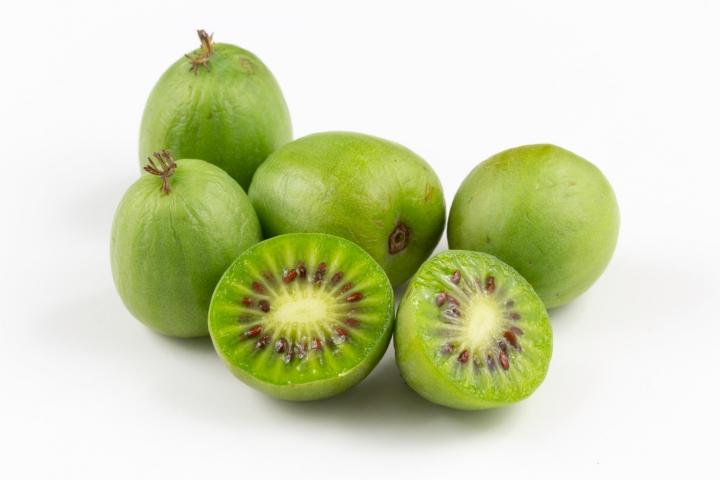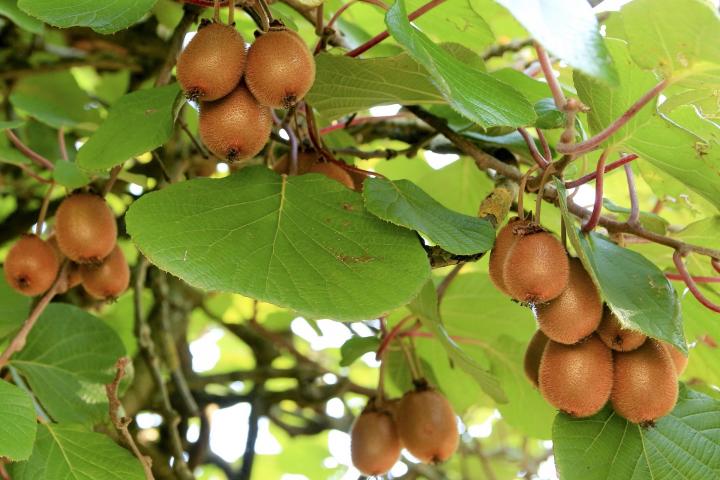
Fruit of the kiwifruit plant, Actinidia deliciosa.
How to Plant, Grow, and Harvest Kiwifruit and Hardy Kiwi
Raw kiwifruit is rich in a protein-dissolving enzyme called actinidain. This makes the kiwi unsuitable for use in dishes that contain milk products or gelatin. If these dishes are not served immediately, the enzyme starts to digest the proteins in the dishes destroying the texture. In gelatin-based dishes, the enzyme can prevent the liquid from solidifying.
ADVERTISEMENT
Are Gooseberries a possible crop for the North East ?
Yes, but… Gooseberries and currants are currently banned in a number of states due to their ability to carry a devastating disease that affects pine trees. See more info here: Currants and Gooseberries
There is a variety of regular (large) kiwi called Jenny that is claimed to be self-fertile.
Kiwi Vines are very aggressive growers. This article states they don't grow quickly. Vines will grow several inches a day at each growing tip. It takes very aggressive pruning to control their size. Kiwi roots are similar to hop roots in that they get very fat and long very quickly. I would say you need to prune them at least monthly after flowering. The cold hardy kind take about 6 years to fruit. They are EXTREMELY sensitive to frost, despite them being called "arctic kiwi"











Comments